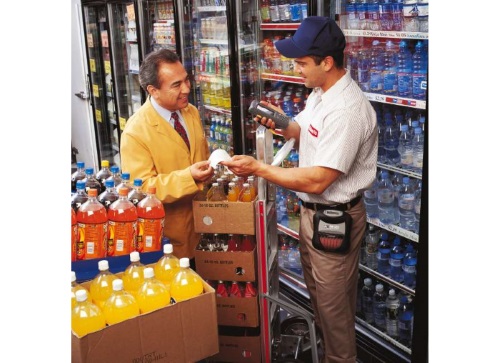The three trends of mobility in the workplace, cloud-based applications and the Internet of Things (IoT) are going to transform the way enterprises operate and enhance customer experiences.
Market leaders in the food and beverage manufacturing and logistics industry will leverage these trends to develop better products, maintain quality and ensure happier customers.
Cold supply chains have come a long way with the development of sensor and other connected technologies, but the transportation of goods, often referred to as ‘food miles’, still takes its toll on the quality and safety of food upon delivery.
As perishable food products are transported across even greater distances, knowing exactly where they are at any given moment is imperative to ensuring their quality and safety for consumers.
The IoT will be a key component to provide real time data on everything from where shipments are, to finding out inventory levels from production to consumption or how to optimize the workflow of all workers.
Many logistics and transportation services in the food industry already rely on these technologies to simplify their processes and understand their businesses better.
Wireless local area network (WLAN), radio frequency identification (RFID), near field communication and real time locating systems for example are critical technologies that enable the IoT.

RFID, WLAN — the cornerstones of transparency
The collection of accurate data in real time is important in networked logistics in the production and delivery of food.
Some food manufacturers already track components via RFID tags in the production line to see where what is at every time.
It is worth implementation especially if many individual parts must come together.
Food manufacturers can maintain visibility of their orders from the time they are received, picked, delivered, and stocked.
Important information can be delivered in real-time through the cloud to account managers, delivery drivers, merchandisers and consumers.
Providing complete visibility to the order status is transformational.
For example, before storage or transportation in the smart supply chain, items and pallets get a digital voice with RFID tags.
With RFID readers in the warehouse, the loading zone and in the truck, the location, status, and content of each container can be known.
When RFID chips are placed on containers storing perishables during the production process, workers at the arrival destination can scan the product to read exactly where it traveled, how long it has been in transport, and ultimately, if it has been kept under the standards for that product.
This data can be delivered through WLAN technology, providing real-time information to a control center, which can eventually react faster to problems or make better decisions about their physical assets.
To succeed in an increasingly competitive landscape, enterprises need to rely on their WLAN as the ‘data highway’ over which the majority of their business information travels – and into the hands of workers.
Today, mobility is no longer the primary goal of network investments – productivity is.

Workforce mobility — the vital link to productivity
The role of the employees in the smart supply chain is changing.
Equipped with mobile computers, scanners and printers, employees actively contribute to data collection and transmission.
This increases the transparency of information flows and helps them to actively maintain track, trace and safety regulations inside and between food and beverage facilitiestrack, trace and safety regulations inside food and beverage facilities track, trace and safety regulations inside food and beverage facilities track, trace and safety regulations inside food and beverage facilities.
Employees play an increasingly important role in the data analysis.
On top of the valuable data they can offer through their roles at the frontline, business intelligence and other analysis software is used to evaluate the collected real time data to make sense of the information.
The employee remains a vital tool to draw the right conclusions from the analyzed data and initiate processes.
Applications can now provide push-to-talk functionality to an entire mobile workforce — from delivery driver, to managers between distribution centers.
Whether they are inside a warehouse or out on the road, talking or sending pre-configured messages is just a one button push away.
This saves time and promotes safety while in the field.
If there is a situation that needs to be documented, a picture can also be taken to attach to a message.
Because these workers are always on the move, knowing where they are can provide real-time information to determine a business need.
All of this data can be leveraged with various applications to determine efficiency, locate an employee that is in distress, or verifying their location to solve a customer problem nearby.
Communication with these workers becomes the foundation for other elements of doing business every day.
The adoption of these fundamental building blocks of IoT is favored by an increasing miniaturization of technology and declining costs of implementation.
Whether IoT solutions are used in storage and asset management when picking or delivery, companies that rely on IoT technologies will be able to work faster and more accurately and thus be a step ahead of competitors in the field.
According to research by Allied Market Research, the worldwide proliferation of food track-and-trace technology is expected to continue growing on to 2020 into a US$14.1 billion market.
The Asia Pacific market is expected to catch up to be the top consumer of this technology in the next six years at a growth rate of 17%.
The important thing to understand is the technologies companies need to build upon is here today.
From the latest ruggedized Android mobile computers to IOT enabled printers and sensors, companies can start to transform their processes right now.
Story by Ryan Goh, VP and GM of Zebra Technologies Asia Pacific.










